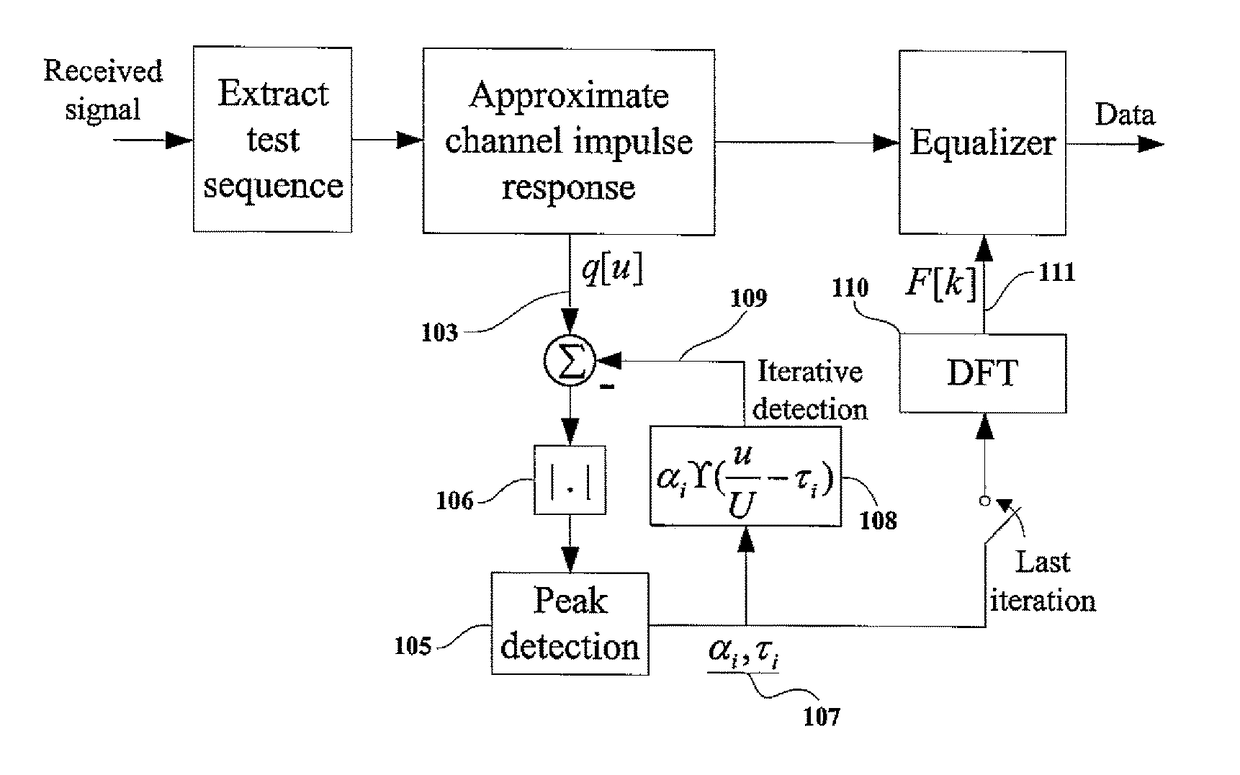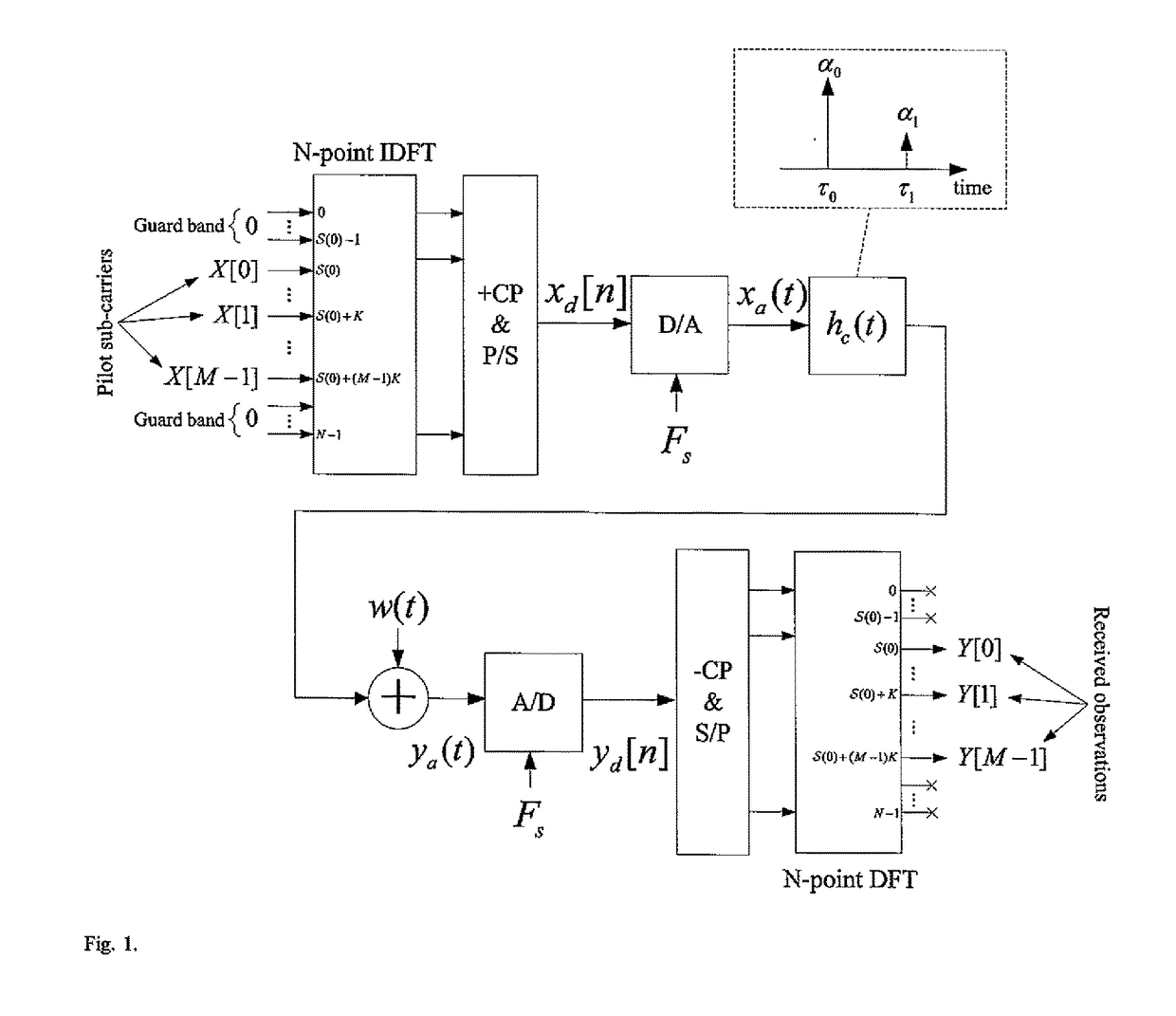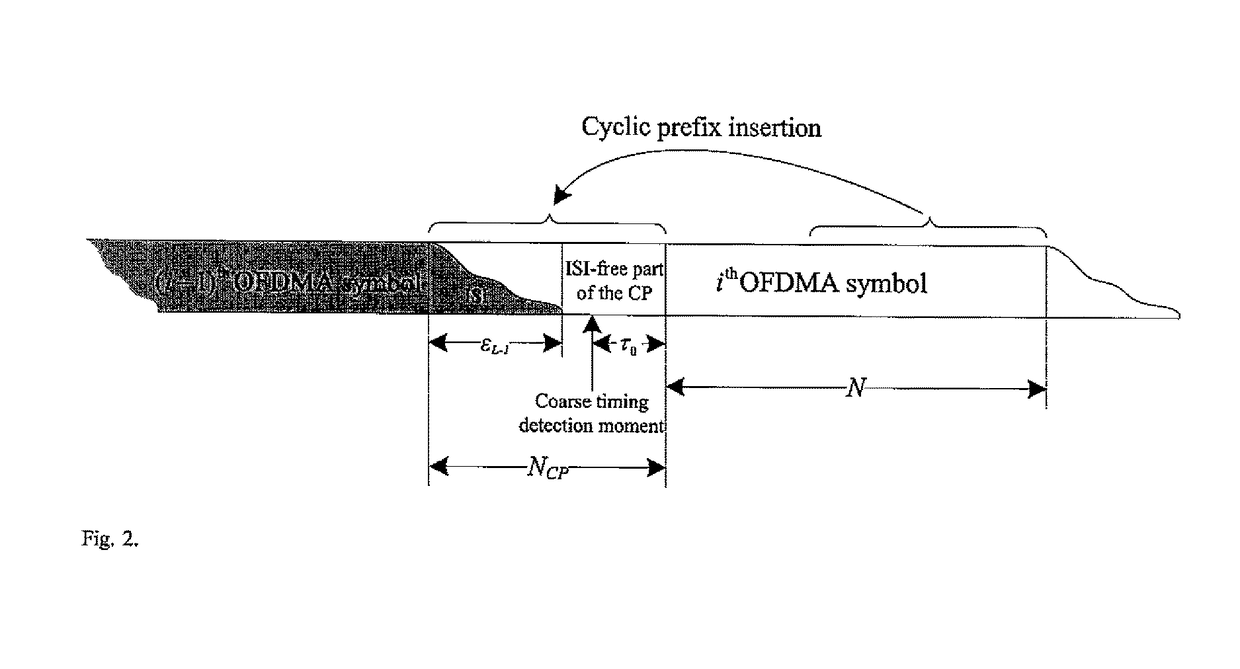Method of Estimating the Frequency Response of Multipath Channels
a multi-path channel and frequency response technology, applied in the field of multi-path channel frequency response estimation, can solve the problems of increasing the cost of channel maintenance, generating a number of channel impairments, and requiring knowledge of the channel auto-correlation matrix and noise variance, so as to achieve enhanced peak detection and better resolution
- Summary
- Abstract
- Description
- Claims
- Application Information
AI Technical Summary
Benefits of technology
Problems solved by technology
Method used
Image
Examples
Embodiment Construction
[0066]Consider the baseband-equivalent OFDMA system shown in FIG. 1. The channel bandwidth is divided into N sub-carriers, M of which are used for channel estimation and are assigned BPSK preamble symbols X[m], m=0, 1, . . . , M−1. According to DOCSIS 3.1 specifications as in Document 8 above, there are guard bands at both ends of the allocated spectrum that cannot be used for data transmission. This restricts the location of the pilot sub-carriers, which are usually centered at the middle of the allocated spectrum. Denote the vector of pilot sub-carrier indexes as S=[S(0), S(1), . . . , S(M−1)], where the elements are related by
S(m)=S(0)+mK, m=0,1, . . . ,M−1, (1)
where S(0) is the “start” sub-carrier and K is sub-carrier “skipping” factor.
[0067]The OFDMA transmitter employs an IDFT module of size N for modulation. The standard IDFT / DFT is not used here, but rather the transform pair specified in DOCSIS 3.1, where the subcarrier indexing is shifted by −N / 2 sub-carriers. Using the D...
PUM
 Login to View More
Login to View More Abstract
Description
Claims
Application Information
 Login to View More
Login to View More - R&D
- Intellectual Property
- Life Sciences
- Materials
- Tech Scout
- Unparalleled Data Quality
- Higher Quality Content
- 60% Fewer Hallucinations
Browse by: Latest US Patents, China's latest patents, Technical Efficacy Thesaurus, Application Domain, Technology Topic, Popular Technical Reports.
© 2025 PatSnap. All rights reserved.Legal|Privacy policy|Modern Slavery Act Transparency Statement|Sitemap|About US| Contact US: help@patsnap.com



